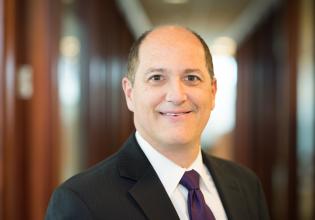
Federal Circuit Review - March 2014
Invention Conceived Abroad Is Prior Art
In Solvay, S.A. v. Honeywell International Inc., Appeal No. 12-1660, the Federal Circuit affirmed a district court’s finding that reduction to practice of an invention conceived abroad qualifies as prior art under pre-AIA 35 U.S.C. § 102(g)(2).
Solvay sued Honeywell for patent infringement. Honeywell countered that Solvay’s claim was invalid because the claimed subject matter had been conceived in Russia by the Russian inventor, disclosed in an unpublished Russian patent application by the Russian inventor, and practiced by Honeywell in the United States prior to Solvay’s priority date. In a previous decision, the Federal Circuit had reversed the district court’s finding of invalidity under pre-AIA 35 U.S.C. § 102(g)(2), holding that Honeywell was not “another inventor” under the statute because Honeywell had not conceived the invention. On remand, Solvay’s asserted claim was again found to be anticipated under § 102(g)(2), now under Honeywell’s alternative theory that the Russian inventor had made the invention within the United States by sending to Honeywell the instructions that were used in reducing the invention to practice. The jury returned a verdict that the Russian inventor’s own unpublished Russian patent application on the subject matter constituted disclosure under § 102(g)(2) such that the inventor did not abandon, suppress, or conceal the invention.
Solvay appealed the finding of invalidity. At issue was whether a reduction to practice in the United States that took place outside of the direction or request of the Russian inventor may inure to the inventor’s benefit such that the invention conceived abroad and practiced in the United States was an invention “made in this country by another inventor.” The inventor and Honeywell had been operating under a collaboration agreement.
The Federal Circuit held that Honeywell’s practice of the invention in the United States satisfied the language of the statute. Evaluating the inurement doctrine, the Federal Circuit held that an inventor receives the benefit of third party reduction to practice of an invention provided that the third party’s actions are not an “unwarranted and hostile use” of the invention.
Judge Newman dissented, asserting that the holding allows “private secret activity”—confidential evaluation in the United States of international inventions that are filed but not published with a foreign patent office— to anticipate a claim under 102(g)(2) even if the same activity is unavailable in an interference under the same statute.
Claim Vitiation Is Not An Except to Doctrine of Equivalents
In Ring & Pinion Service Inc. v. ARB Corp., Appeal 13-1238, the Federal Circuit reversed summary judgment of non-infringement and remanded with instructions to grant summary judgment of infringement.
R&P sued for a declaratory judgment of non-infringement of a patent owned by ARB. The parties stipulated that the accused product literally met every limitation of the representative claim except for a “cylinder” limitation. The parties further stipulated that the accused product included an “equivalent” cylinder. The parties cross-moved for summary judgment and stipulated that the outcome of the case would be determined by the resolution of a single legal issue: whether an equivalent is barred under the doctrine of equivalents because it was foreseeable at the time of the patent application. The district court held that, while foreseeability does not preclude the application of the doctrine of equivalents, a finding of infringement under the doctrine of equivalents would vitiate the “cylinder” limitation. The district court granted summary judgment of non-infringement to R&P. ARB appealed.
The Federal Circuit reversed, holding that the district court committed legal error because claim vitiation is not an exception to the doctrine of equivalents. Further, the parties’ stipulation precluded a finding of claim vitiation because it states that the accused product includes an equivalent to the “cylinder” limitation. The Federal Circuit agreed with the district court that foreseeability does not bar the doctrine of equivalents and held that this conclusion should have resulted in a judgment of infringement pursuant to the stipulation.
Range in Limitation Is Not Indefinite
In Takeda Pharmaceutical Co. v. Zydus Pharmaceuticals USA, Inc., Appeal No. 13-1406, the Federal Circuit reversed a district court’s finding of infringement and affirmed its judgment of claim validity.
Takeda sued ANDA-filer Zydus for infringing a formulation patent relating to an acid reflux drug. Claim 1 of the patent recites a formulation with “fine granules having an average particle diameter of 400 µm or less.” The district court construed that term to include particle diameters within the accepted margin of error of ±10%. Based on this claim construction, the district court determined that Zydus’s product infringed Takeda’s patent. The district court also determined that Zydus failed to prove that the claim was invalid for failure to comply with the definiteness, written description, and enablement requirements. Zydus appealed.
The Federal Circuit reversed the district court’s infringement finding and instead concluded that the proper construction of the disputed claim term is “fine granules having an average particle diameter of precisely 400 µm or less.” The Federal Circuit based its construction on the fact that the specification discloses that the maximum particle size is “practically 425 µm or less.” The specification’s use of the word “about” at three points in the specification did not justify a 10% expansion of claim scope. The Federal Circuit then upheld the district court’s finding of validity. Zydus had argued that the claim is indefinite because it does not specify the measurement method used to determine average particle diameter. In rejecting that argument, the Federal Circuit held that “the mere possibility of different results from different measurement techniques” does not render the claim indefinite. Regarding enablement, the Federal Circuit held that, because the patent identifies one viable measurement technique, there is no dispute that a skilled artisan would know how to use that technique to measure particle diameter.
Claim Construction Review is De Novo
In Lighting Ballast Control LLC v. Philips Electronics North America Corp., Appeal No. 12-1014, the Federal Circuit sitting en banc reinstated the previous panel decision and upheld the standard of de novo review of claim construction enunciated in Cybor Corp. v. FAS Technologies, Inc., 138 F.3d 1448 (Fed. Cir. 1998) (en banc).
The Federal Circuit granted en banc a petition by plaintiff-appellee Lighting Ballast to reconsider the holding of Cybor, which established de novo review for issues of claim construction. This new en banc decision addresses: (a) whether the Federal Circuit should overrule Cybor; (b) whether the Federal Circuit should afford deference to any aspect of a district court’s claim construction; and, if so, (c) which aspects should be afforded deference.
The Federal Circuit, divided 6-4, upheld the Cybor standard of de novo review based largely on stare decisis. Accordingly, the Federal Circuit reinstated the panel’s decision reversing the district court’s construction, where the district court had construed a “voltage source means” limitation as not invoking 35 U.S.C. § 112, sixth paragraph.
Judges O’Malley, Rader, Reyna, and Wallach dissented, arguing that claim construction requires district courts to resolve questions of fact. Consequently, the dissent argued that Cybor misapprehends Supreme Court precedent, including Markman v. Westview Instruments, Inc., 517 U.S. 370 (1996), and contradicts Fed. R. Civ. P. 52(a)(6), which requires deference to district court findings of fact.

